Light French Sponge Cake : genoise
This light and tall sponge cake makes the perfect base for your desserts.
Soft, airy, and foolproof, it’s ideal for homemade bakes, from elegant layer cakes to refined desserts.
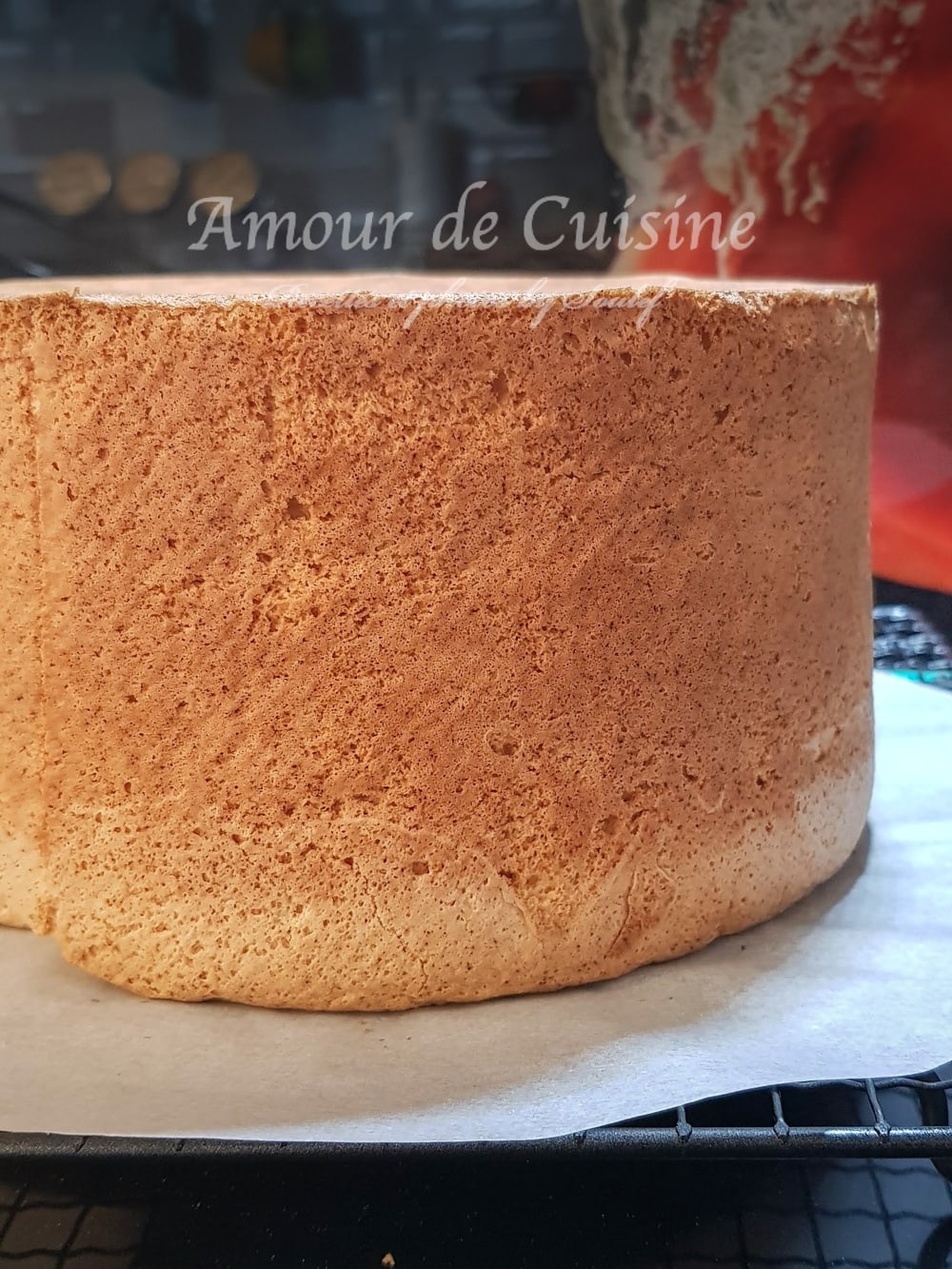
Light, Fluffy and Foolproof Sponge Cake Recipe for Layer Cakes and Celebrations
A sponge cake or genoise is one of those french classics we turn to time and again for birthdays or any special gathering.
Its charm lies in its simplicity: with only a few everyday ingredients, you can create something soft, airy, and beautifully light.
Over the years, this tall and reliable version has become my personal favorite, the one I always recommend when friends ask for a dependable cake base.
It has never failed me, and I believe it will soon become a trusted staple in your kitchen too.
With the right techniques and a few easy tips, you’ll be able to bake a sponge that looks professional, tastes delightful, and sets the perfect stage for celebration cakes or elegant homemade desserts.
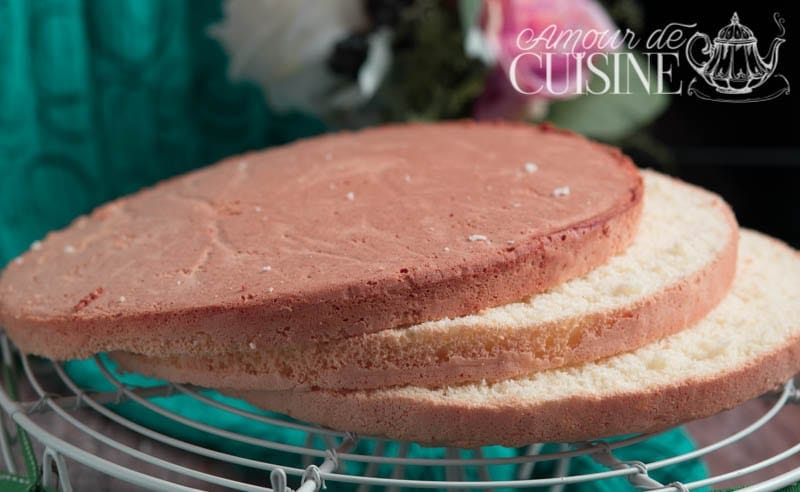
The Basic Sponge Cake Ratio
The principle of making a sponge cake is very simple: for each egg, you multiply by 30 to get the amount of sugar and flour needed.
For a chocolate sponge, simply replace part of the flour with unsweetened cocoa powder, depending on how rich you want the chocolate flavour to be.
1 egg → 30 g flour → 30 g sugar
2 eggs → 60 g flour → 60 g sugar
3 eggs → 90 g flour → 90 g sugar
4 eggs → 120 g flour → 120 g sugar
5 eggs → 150 g flour → 150 g sugar
Ingredients for a Light and Fluffy Sponge Cake
- Eggs (4, at room temperature)
Separate the whites from the yolks. Whipping the whites with a pinch of salt creates a firm, airy meringue, while the yolks add color and structure when folded in later. - Sugar (120 g / ½ cup)
Use fine caster sugar so it dissolves easily into the whites, ensuring a smooth, even texture without graininess. - Flour (120 g / 1 cup, sifted)
All-purpose flour works well, but cake flour is even better thanks to its lower protein content, which creates a softer, more delicate crumb. - Baking powder (½ packet, about 5 g / 1 tsp)
Though some traditional recipes omit it, adding a little baking powder helps the sponge rise higher and gives it an airy, fluffy texture, perfect for layer cakes and celebration desserts.
Essential Equipment for a fluffy genoise
- Electric whisk or stand mixer – helps achieve stiff, glossy meringue quickly.
- Large mixing bowl – preferably stainless steel, glass, or ceramic (avoid plastic).
- Rubber spatula – to fold flour gently and scrape every bit of batter.
- Springform cake pan (20 cm / 8 in) – straight sides ensure an even rise.
- Baking paper – line your tin to prevent sticking and ensure a smooth finish.
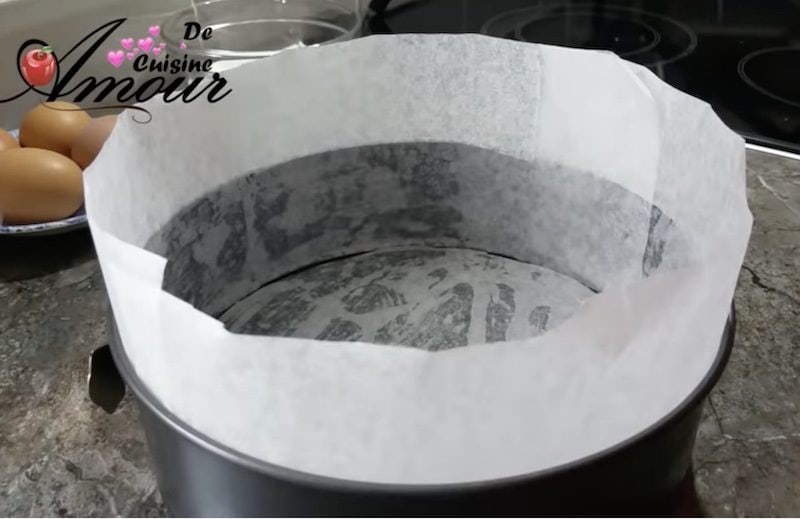
Step-by-Step Guide to Making Homemade Sponge Cake
- Separate the eggs: Begin by separating the whites from the yolks. Leave them at room temperature for the best volume and texture.
- Prepare the dry ingredients: Sift the flour and mix it with the baking powder to avoid lumps.
- Whip the egg whites: Place the whites in a large bowl or stand mixer. Beat until foamy, then gradually add the sugar. Continue whisking until you achieve a glossy, firm meringue.
- Incorporate yolks and flour: Add the yolks, then gently fold in the flour. Use a spatula or hand whisk, mixing carefully to keep the batter light and airy.
- Pour into the pan: Grease and flour a round cake tin (20 cm / 8 in recommended) or line with baking paper. Pour in the batter and smooth the top.
- Bake: Bake at 180 °C / 350 °F for about 20 minutes. In a fan-assisted oven, check at 15-16 minutes. The sponge is done when golden and a toothpick comes out clean.
- Cool: Rest the cake for a few minutes, then remove it from the pan and transfer to a wire rack to cool completely.
💡Note: The sponge pictured was baked in a 25 cm (10 in) pan and rose to about 3.5 cm in height.
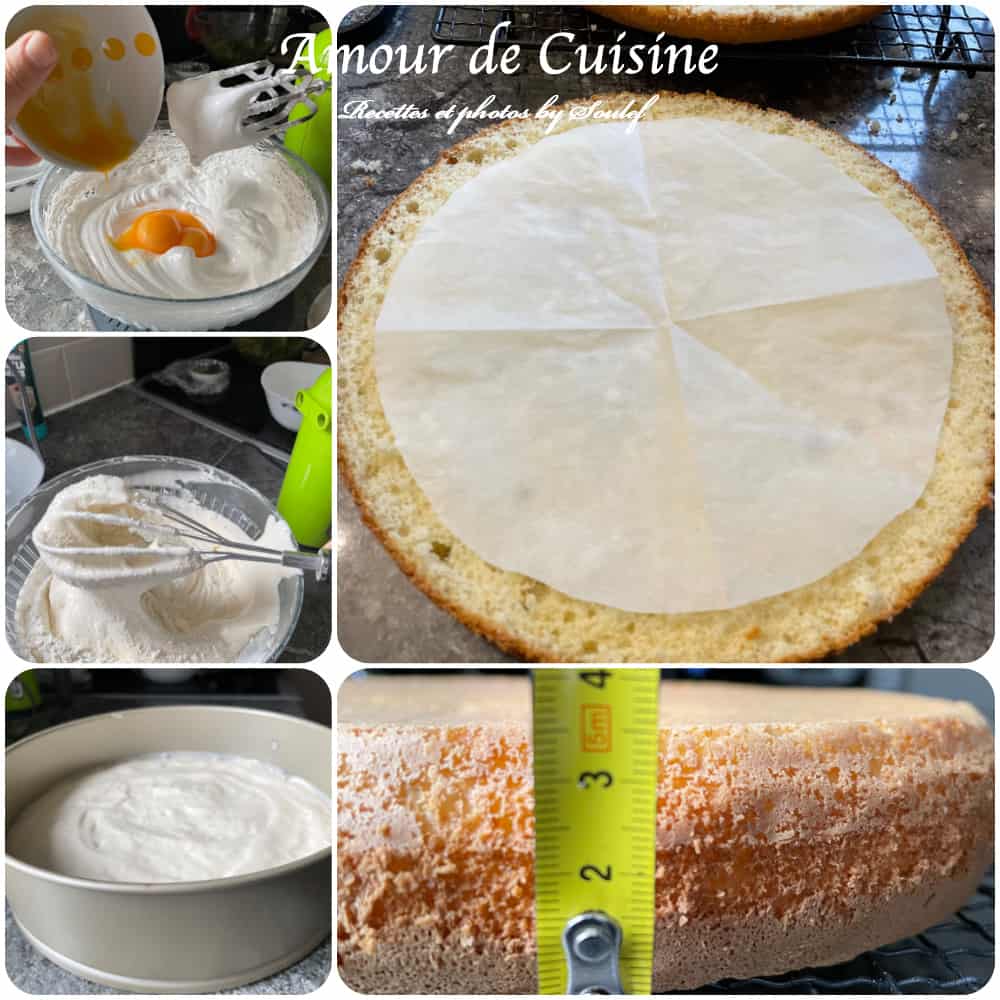
Video Tutorial: Foolproof French Sponge Cake
Today I’m sharing the sponge cake recipe in video format, clear, detailed, and easy to follow.
Head over to my YouTube channel, subscribe, and turn on the notification bell. You’ll find plenty more delicious step-by-step baking videos there!
Foolproof Tips for a Perfect Sponge Cake
- Use room temperature ingredients: Take the eggs out of the fridge at least 30 minutes beforehand. This helps the whites whip up better and keeps the batter smooth.
- Fold the flour gently: Use a spatula instead of an electric whisk. This keeps the batter light and airy without deflating it.
- Bake immediately: Once the batter is ready, pour it into the pan and put it straight in the oven. Letting it sit will make it lose volume.
- Preheat the oven properly: Make sure it’s fully hot before placing the cake inside. Avoid opening the door too often, or the temperature drop may flatten the sponge.
- Bake on the middle rack: Position the pan in the center for even heat distribution, especially if using a fan-assisted oven.
- Check doneness at the right time: Insert a toothpick in the center, it should come out clean. Watch the last few minutes carefully to avoid overbaking.
- Cool correctly: Let the sponge rest briefly, then remove it from the pan and place it on a wire rack. This prevents condensation and keeps it light.
Pan Size and Sponge Cake Height
Choosing the right pan is key to a successful sponge cake. Since the batter is light and bakes quickly, always use a good-quality pan with straight sides to ensure even cooking and a neat shape.
- 20 cm (8 in) pan + 4 eggs → sponge about 5 cm high
- 18 cm (7 in) pan + 4 eggs → sponge about 7 cm high
When using a smaller pan for a taller sponge, lower the oven temperature to 160 °C / 320 °F and extend the baking time. This ensures the center cooks through without burning the top.
For extra tall cakes, you can double the quantities:
- 20 cm (8 in) pan, 10 cm tall → use 8 eggs
- 18 cm (7 in) pan, 10 cm tall → use 6 eggs
In short: the smaller and taller the pan, the lower and longer the bake should be.

Common Mistakes and How to Fix Them
Even though sponge cake seems simple, small details can make it fail. Here are the most common mistakes and how to avoid them:
– The sponge doesn’t rise : The egg whites weren’t whipped enough, or the flour was mixed in too roughly.
Beat the whites until stiff peaks form and gently fold in the flour with a spatula to keep the batter airy.
– The sponge collapses after baking : The oven door was opened too early or the cake was underbaked.
Don’t open the oven until the end of the baking time. Check with a toothpick, it should come out clean.
– Dense or dry texture : The batter was overmixed or the cake was overbaked.
Mix only until the flour is incorporated and keep an eye on the final minutes of baking.
– Top burns but inside is raw : Oven too hot or pan placed too high.
Bake on the middle rack and lower the oven temperature by 10-20 °C (50 °F) if needed.
– Cake sticks to the pan : The pan wasn’t properly lined or greased.
Always line with baking paper or grease and flour the pan well.
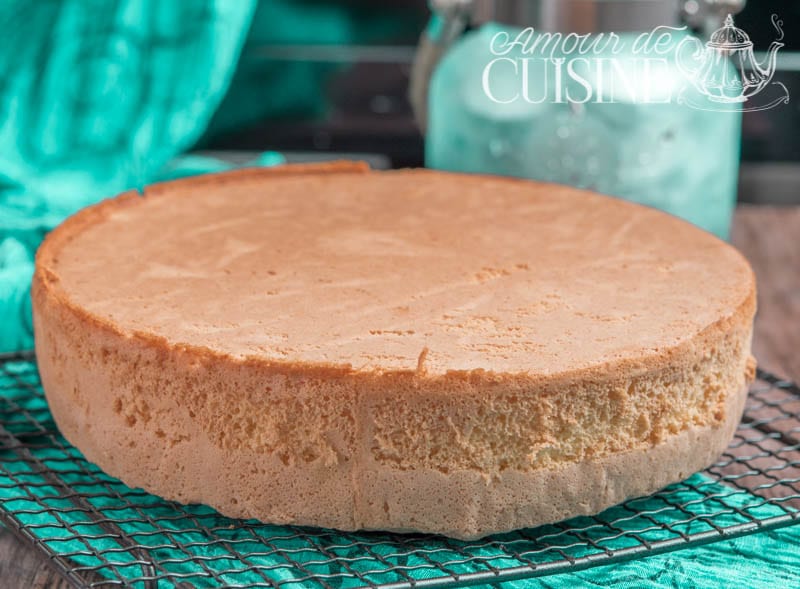
Sponge Cake Variations
– Chocolate Sponge cake : Replace 30 g of flour with unsweetened cocoa powder. Be sure to sift the cocoa with the flour to prevent lumps and achieve a moist, chocolatey sponge, perfect for indulgent layer cakes.
– Gluten-Free Sponge : Use a gluten-free flour blend or replace the flour with a mix of cornstarch and rice flour. The result is still light and airy, ideal for those with intolerances or anyone seeking a gentler option.
– Flavoured Sponge : Add a teaspoon of vanilla extract, some orange zest, or a few drops of coffee essence to the egg yolks before folding them in. This infuses subtle flavours without altering the cake’s texture.
– Sponge Without Baking Powder : A more traditional version: classic sponge cakes rely solely on well-whipped eggs for lift. If you prefer a finer texture, you can omit the baking powder, but be sure to whip the whites very firmly for maximum lightness.
Other basic pastry recipes to try
- Homemade Shortcrust Pastry (Sweet Tart Crust)
- Vanilla Mousseline Cream Recipe
- Easiest royal icing recipe
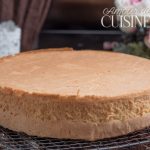
Easy Homemade French Sponge Cake Recipe – Light, Fluffy and Foolproof
- Total Time: 35 minutes
- Yield: 8 servings 1x
Description
Sponge cake is one of the most popular choices when it comes to baking a birthday cake. Soft, airy, and requiring just a few ingredients, it’s the perfect base. This recipe is light, tall, and foolproof, a version I’ve been using for years.
Ingredients
- 4 large eggs (room temperature) : separate whites from yolks for better volume.
- 120 g sugar : fine caster sugar dissolves easily for a smooth batter.
- 120 g all-purpose flour (or cake flour for a softer crumb).
- ½ packet baking powder (approx. 5 g) : optional, but helps create extra lift.
Instructions
- Prepare the ingredients: Separate eggs and bring them to room temperature. Preheat oven to 180 °C / 350 °F.
- Whip the egg whites: Beat until foamy, then gradually add sugar. Continue until you have a firm, glossy meringue.
- Incorporate yolks: Add yolks one by one, whisking briefly to combine.
- Add dry ingredients: Sift flour with baking powder and fold it in gently using a spatula. Do not overmix.
- Transfer to the pan: Pour batter into a greased and lined 20 cm pan, smoothing the surface.
- Bake: Bake for 18–20 minutes (16 minutes in a fan-assisted oven). Check with a toothpick – it should come out clean.
- Cool: Leave to rest a few minutes, then release from the tin and cool completely on a wire rack.
- Prep Time: 15 min
- Cook Time: 20 min
- Category: basic pastry, dessert
- Cuisine: French cuisine
Nutrition
- Serving Size: 1 portion
- Calories: 180 kcal
